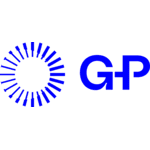Today’s most successful companies know their greatest asset is their people. If you’re ready to truly invest in your organization’s talent, it is time to upgrade to a human resources information system (HRIS) — a digital solution for HR management.
An HRIS allows your HR team to gather, manage, and disseminate all of your company’s core HR operations. Think of the HRIS as a digital library of employee information. Instead of spreading important insights across spreadsheets, email threads, and paper documents, you centralize information in one hub.
Key features of an HRIS
An HRIS enables your team to see the big picture of the entire employee lifecycle — from recruiting and onboarding to payroll, performance appraisals, and benefits administration to offboarding. Today’s best solutions also offer employee self-service functions.
At its finest, an HRIS also features functionality such as talent management and human capital management (HCM) options. Talent management includes succession planning, career development, and learning opportunities. HCM solutions typically offer time entry and workforce management.
Benefits of an HRIS
As part of the process of adopting new technology, it’s critical to consider and convey to stakeholders the value that justifies the time and money spent.
HR technology helps HR leaders save time and cut costs, but the benefits of an HRIS reach beyond the HR department to benefit all employees and the organization as a whole. With an HRIS, HR professionals can take on greater responsibility within your company. Rather than spending all their time on administrative duties, they can dive into the meaningful work of developing relationships with employees and executives. Consider some of the primary benefits below.
Save time with automation
In a company that values human capital, the HR staff spends less time processing payroll and more time analyzing the state of the workforce. An HRIS can help by automating clerical tasks and freeing up time for more meaningful, strategic work.

Factorial HR, shown above, is an HR software solution that unifies HR processes such as time-off management, applicant tracking, employee onboarding, payroll, and performance.
Make HR strategic
HR professionals have extensive knowledge to share. You can empower your team to provide training, such as sessions to help managers improve communications and motivate their people. This is valuable work for employee retention: According to a SHRM survey, 58 percent of employees who left a job due to culture claim said that poor management was the main reason for their exit.
As part of the HR functions, leaders can also inform the C-suite on the effectiveness of the workforce. Using an HRIS, staff can measure skills and competencies, employees’ performance in critical areas, and overall costs.
Improve the employee experience
This kind of employee management software can also enable employees to take on a larger role in managing their information. Using self-service apps, employees can update their personal information, sign up for benefits, enroll in training, search for internal jobs, test their knowledge, and set personal goals for the year.
Additionally, technology like an HRIS can support dispersed teams. In a world where even small companies have remote workers across multiple sites, cloud-based systems can keep your workforce connected to the organization.
By unifying all of your employee systems, you can automate the manual work that you and your employees usually need to do to make changes from onboarding to offboarding.

Rippling, above, provides a single platform for your employee data across payroll, benefits, devices, and apps.
Ensure compliance
This centralized repository for employee data cancels out the need for paper files, which stack up quickly, lead to human error, and can get damaged or lost.
Data security and privacy are vital when handling sensitive personal information, and an HRIS helps keep employee information secure and private. While paperwork and spreadsheets can be easily accessed by unauthorized employees, a password-protected HRIS helps keep personal information in the right hands.
Some HRIS solutions provide resources to help companies stay on top of federal compliance deadlines for HR, benefits, and payroll.

Zenefits, above, offers a compliance assistant to help you monitor deadlines, set custom reminders, and sync them to your calendar.
Analyze HR
An HRIS provides powerful analytics capabilities and reporting functions for important metrics like turnover rate and retention rate per manager. Armed with actionable data, HR professionals can create strategies that make an impact at a higher level.
This technology also gives HR leaders ample data on employees, which can be used to identify opportunities for training, advancement, and succession planning for top employees. With the right data, HR can gain insights in order to help motivate, reward, and support employees.
How to implement an HRIS
Your HRIS will serve as the backbone of your data-driven HR department. Implementing HRIS software, however, can be a process that takes years. Nevertheless, the process is worth the end result of transitioning to a more effective system of HR management.
1) Create a plan
At this stage, you should identify the problems that your HRIS will solve. Your project plan should:
- Define the goals for your HRIS
- Create an estimated budget
- Assign functions for the HRIS
- Establish a cross-disciplinary implementation team
2) Involve stakeholders
To ensure success, you must involve all company stakeholders from the executive suite to IT to employees and managers. After all, everyone in the company will be relying the technology — whether they use it on a daily basis to log hours or utilize the reporting features to make business decisions.
You can send out approval surveys and also include members from each group as part of your implementation team.
3) Transfer data carefully
When setting up a new HRIS, it is critical to not rush the process of transferring data. If you’re working too hurriedly, your team can easily input the wrong pay rate or give timecard-approvals to the wrong manager control. To avoid making mistakes, consider hiring a consultant to transfer data or or utilize your HRIS vendor’s team to ensure a smooth transition.
Last word on HRIS software
Most systems are customizable to meet your company’s unique needs, and the majority of systems are now on the cloud, enabling access anywhere, anytime. If you’re looking to get started looking at HR software, we spent 44 hours researching dozens of solutions to come up with a short list of the best HRIS software.



























